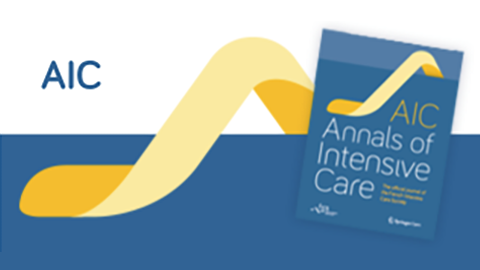02/03/2020


Source
Abstract
Purpose It has been suggested that, by recruiting lung regions and enlarging the distribution volume of the cold indicator, increasing the positive end-expiratory pressure (PEEP) may lead to an artefactual overestimation of extravascular lung water (EVLW) by transpulmonary thermodilution (TPTD)
Methods
In 60 ARDS patients, we measured EVLW (PiCCO2 device) at a PEEP level set to reach a plateau pressure of 30 cmH_2O (HighPEEP_start) and 15 and 45 min after decreasing PEEP to 5 cmH_2O (LowPEEP_15′ and LowPEEP_45′, respectively). Then, we increased PEEP back to the baseline level (HighPEEP_end). Between HighPEEP_start and LowPEEP_15′, we estimated the degree of lung derecruitment either by measuring changes in the compliance of the respiratory system (Crs) in the whole population, or by measuring the lung derecruited volume in 30 patients. We defined patients with a large derecruitment from the other ones as patients in whom the Crs changes and the measured derecruited volume were larger than the median of these variables observed in the whole populationResults
Reducing PEEP from HighPEEP_start (14 ± 2 cmH_2O) to LowPEEP_15′ significantly decreased EVLW from 20 ± 4 to 18 ± 4 mL/kg, central venous pressure (CVP) from 15 ± 4 to 12 ± 4 mmHg, the arterial oxygen tension over inspired oxygen fraction (PaO_2/FiO_2) ratio from 184 ± 76 to 150 ± 69 mmHg and lung volume by 144 [68–420] mL. The EVLW decrease was similar in “large derecruiters” and the other patients. When PEEP was re-increased to HighPEEP_end, CVP, PaO_2/FiO_2 and EVLW significantly re-increased. At linear mixed effect model, EVLW changes were significantly determined only by changes in PEEP and CVP ( p < 0.001 and p = 0.03, respectively, n = 60). When the same analysis was performed by estimating recruitment according to lung volume changes ( n = 30), CVP remained significantly associated to the changes in EVLW ( p < 0.001)Conclusions
In ARDS patients, changing the PEEP level induced parallel, small and reversible changes in EVLW. These changes were not due to an artefact of the TPTD technique and were likely due to the PEEP-induced changes in CVP, which is the backward pressure of the lung lymphatic drainage. Trial registration ID RCB: 2015-A01654-45. Registered 23 October 2015Liens article
©2020 The Author(s)